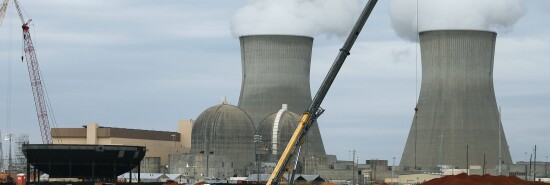
Illinois needs to undo its nuclear ban
Paige Lambermont | Competitive Enterprise Institute
Video Embed
Illinois has banned construction of new nuclear power plants for the past 36 years, since 1987. That’s a real predicament for a state that already relies heavily on that energy source for 53% of its electricity needs.
Now there’s a chance to end the nonsensical ban as the legislature may be poised to vote – again – on a plan to do just that. Only six months ago, the legislature overwhelmingly passed legislation, SB 76, to get rid of the ban, but it was vetoed by Democratic Gov. J.B. Pritzker.
Starting Nov. 7, lawmakers may have a chance to override the governor’s veto, giving the people of Illinois the chance to expand access to affordable, reliable, abundant energy to power their future.
“There is a pathway to override this veto, however, it will come down to whether the Speaker allows this bill to be called in the House,” State Sen. Sue Rezin, the bill sponsor, told WCSJ News.
In recent years, many states that had similar bans on nuclear power have acted to change them. West Virginia passed legislation repealing its nuclear ban in 2022. Since 2016, Montana, Kentucky, and Wisconsin have done the same. Connecticut has also amended its ban to allow for new construction at its existing plant site, Millstone Nuclear Power Plant.
The barrier to reform in Illinois is the governor.
Gov. Pritzker said he wasn’t happy with SB 76’s inclusion of large reactors, which he views as being less safe. When it was initially put forward, the bill only applied to small modular reactors that are smaller than conventional reactors, both in physical footprint and in electrical output. Ultimately, the bill that passed was expanded to include more reactors.
But it’s important to note that despite the governor’s misgivings, the only reactors included in SB 76 are newer designs with enhanced safety and performance features. This includes the type of reactor that just came online in Georgia earlier this year and is already producing a whopping 1,100 megawatts of reliable power, enough to power 500,000 homes.
In the event that the veto override attempt is unsuccessful, Sen. Rezin has also filed an alternative version of the bill, SB 2591, which reverts to the previous language limiting the reactor types that could be built to small modular reactors. This version would be more likely to get the governor’s support but would exclude some reactors that are included in SB 76.
Given that the bill originally passed with a supermajority in both chambers, the override is likely to pass if it comes to the floor; but if that doesn’t happen, the alternative bill will provide an opportunity for small modular reactor construction, which will still be an improvement on the blanket ban.
Ultimately, it makes no sense for Illinois to ban further progress on nuclear power. Illinois uses the most nuclear power of all U.S. states – nearly 100,000 gigawatt-hours in 2022. The state’s citizens and businesses rely on six different power plants that have 11 reactors in total. To put this in context, the amount of electricity that Illinois nuclear plants produce every year could power more than 9 million households at average consumption.
Illinois legislators have already demonstrated that they recognize the importance of nuclear power and getting rid of this outdated and misguided ban. Now they need to override the governor’s veto.
Paige Lambermont is a research fellow for the Competitive Enterprise Institute, a free market public policy organization based in Washington, D.C.
